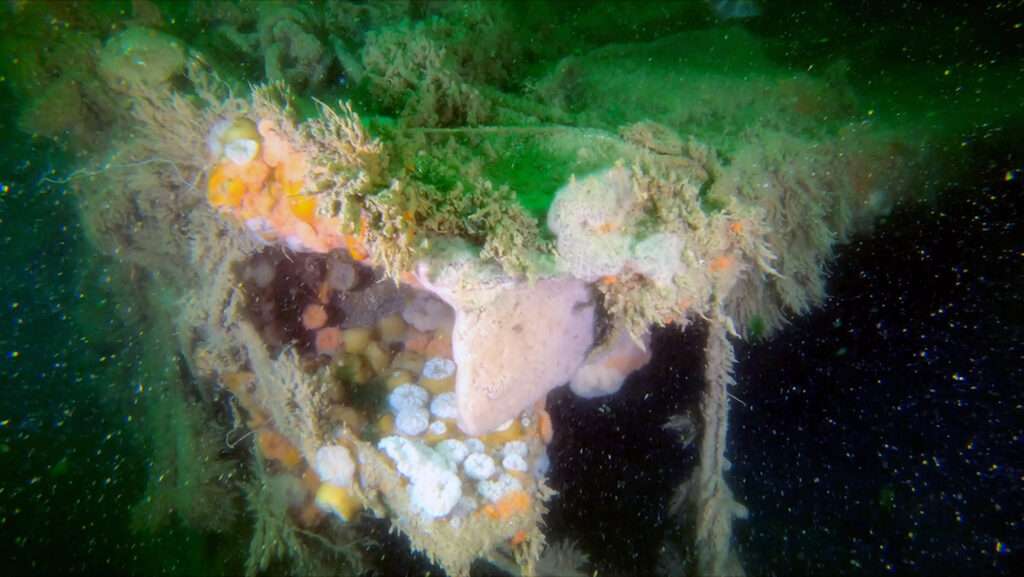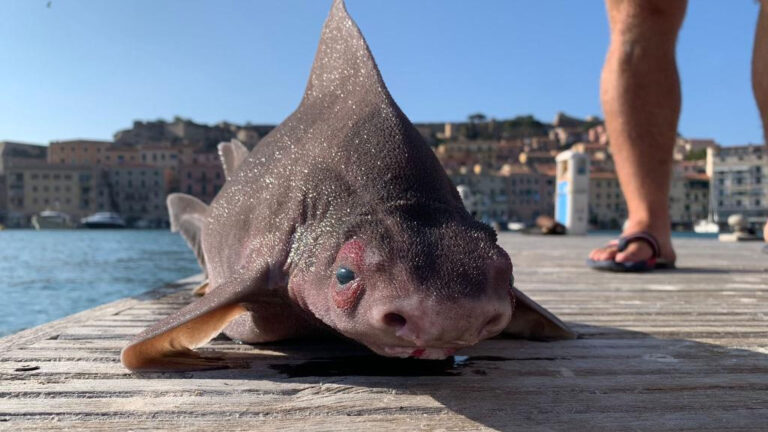A Nazi patrol boat sunk by the RAF in World War II is leaking toxic pollutants into the sea and is set to be even more dangerous as it rusts away, a new study has revealed.
The V 1302 John Mahn was a German fishing trawler used as a patrol boat and sunk off the Belgian coast in 1942.
Now, 80 years later, Belgian scientists say that the boat and other sunken vessels like it “can still be polluting our marine ecosystem.”
The experts added: “In fact, their advancing age might increase the environmental risk due to corrosion, which is opening up previously enclosed spaces.
“As such, their environmental impact is still evolving.”
Newsflash obtained a statement from the academic journal Frontiers in Marine Science, which published the new study titled ’80 years later: Marine sediments still influenced by an old war ship’ on 18th October.
The study was authored by Josefien Van Landuyt, Kankana Kundu, Sven Van Haelst, Marijke Neyts, Koen Parmentier, Maarten De Rijcke and Nico Boon.

Frontiers said in its statement that the researchers discovered that the 80-year-old historic World War II shipwreck “is still influencing the microbiology and geochemistry of the ocean floor where it rests.”
They added that the “wreck is leaking hazardous pollutants, such as explosives and heavy metals, into the ocean floor sediment of the North Sea, influencing the marine microbiology around it.”
The experts explained: “The seabed of the North Sea is covered in thousands of ship and aircraft wrecks, warfare agents, and millions of tons of conventional munition such as shells and bombs.
“Wrecks contain hazardous substances (such as petroleum and explosives) that may harm the marine environment. Yet, there is a lack of information about the location of the wrecks, and the effect they might have on the environment.”
One of the study’s authors, Josefien Van Landuyt, of Ghent University, said: “The general public is often quite interested in shipwrecks because of their historical value, but the potential environmental impact of these wrecks is often overlooked.”
The experts said that it is thought that “World War I and II shipwrecks around the world collectively contain between 2.5m and 20.4m tons of petroleum products”.
Van Landuyt added: “While wrecks can function as artificial reefs and have tremendous human story-telling value, we should not forget that they can be dangerous, human-made objects which were unintentionally introduced into a natural environment.”
She also said: “Today, new shipwrecks are removed for this exact reason.”
Van Landuyt and her colleagues looked into how the V-1302 John Mahn in the Belgian part of the North Sea is impacting the microbiome and geochemistry in its surrounding seabed.
Van Landuyt said: “We wanted to see if old shipwrecks in our part of the sea (Belgium) were still shaping the local microbial communities and if they were still affecting the surrounding sediment. This microbial analysis is unique within the project.”
The researchers took steel hull and sediment samples from the vessel and around it and found “varying degrees of concentrations of toxic pollutants depending on the distance from the shipwreck”.
They said they found “heavy metals (such as nickel and copper), polycyclic aromatic hydrocarbons (PAHs; chemicals that occur naturally in coal, crude oil, and gasoline), arsenic, and explosive compounds.”
The experts said: “The highest metal concentrations were found in the sample closest to the ship’s coal bunker. The freshly deposited sediment in the wake of the wreck had a high metal content. The highest PAH concentrations were closest to the ship.”
Van Landuyt said: “Although we don’t see these old shipwrecks, and many of us don’t know where they are, they can still be polluting our marine ecosystem.”
She added: “In fact, their advancing age might increase the environmental risk due to corrosion, which is opening up previously enclosed spaces. As such, their environmental impact is still evolving.”
The statement said: “They also found that the ship influenced the microbiome around it. Known PAH degrading microbes like Rhodobacteraceae and Chromatiaceae were found in samples with the highest pollutant content. Moreover, sulfate reducing bacteria (such as Desulfobulbia) were present in the hull samples, likely leading to the corrosion of the steel hull.”
The study is “only the tip of the iceberg”, with Van Landuyt saying: “People often forget that below the sea surface, we, humans, have already made quite an impact on the local animals, microbes, and plants living there and are still making an impact, leaching chemicals, fossil fuels, heavy metals from — sometimes century old — wrecks we don’t even remember are there.
“We only investigated one ship, at one depth, in one location. To get a better overview of the total impact of shipwrecks on our North Sea, a large number of shipwrecks in various locations would have to be sampled.”
To find out more about the author, editor or agency that supplied this story – please click below.
Story By: Joseph Golder, Sub-Editor: Marija Stojkoska, Agency: Newsflash
The Ananova page is created by and dedicated to professional, independent freelance journalists. It is a place for us to showcase our work. When our news is sold to our media partners, we will include the link here.




